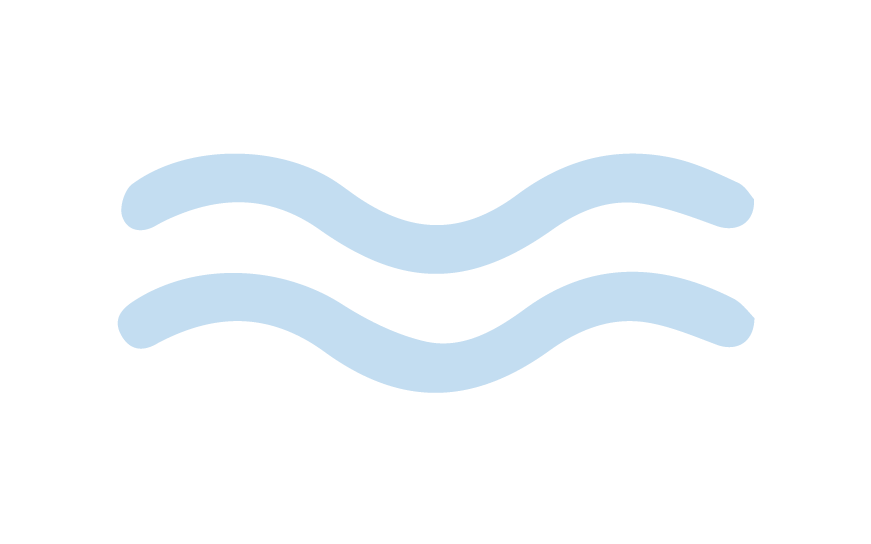Top 6 Cellulite Removal Methods: What Works, What Doesn't
Cellulite. It sounds like a cartoon villain, or a brand of soda you’d never drink. You’ve heard it by other, less flattering names, too: orange peel, hail damage, cottage cheese.If you have it, you’re not alone. Nearly 90% of women past the age of 30 have cellulite on their bodies.
But what exactly is cellulite and where does it come from? As normal subcutaneous fat cells accumulate in the vertically oriented connective tissue fascicles beneath the skin, they push up against the skin, causing the fibrous connective cords tethering skin to muscle to pull down, creating an uneven “dimpled” surface.
Cellulite typically only affects women and reveals itself post-puberty, staking its claim to our thighs, butt, stomach, hips, knees, and arms. It appears primarily in obese women, but thin women can also develop cellulite. Hormonal changes, pregnancy, genetics, age, lifestyle choices, and pollution can also affect how much cellulite you get.
Women are affected by cellulite because of our physiological makeup. When our estrogen starts to decrease as we age, we lose receptors in our blood vessels and thighs, decreasing circulation. This causes less oxygen and nutrition to reach the affected areas, limiting collagen production. As fat cells grow, they push through and produce that “cottage cheese” look.

Usually women get cellulite around the knees, hips, butt, tummy, and triceps, because they have three layers of fat in these areas. In women, collagen, the main protein of connective tissue, has a picket fence structure, whereas in men it resembles a chain-link fence, a much stronger structure that holds in fat better.
Sadly, womens’ bodies are designed to store fat. This is because our adrenergic receptors (alpha receptors and beta receptors) are out of whack. Alpha receptors, when stimulated, cause fat cells to produce fat whereas beta receptors, when stimulated, break down fat. Unfortunately, for every beta receptor, we have about nine alpha receptors. Men, on the other hand, have a one-to-one alpha-to-beta receptor ratio.
Dieting and exercise are the primary methods used to get rid of cellulite, but cellulite is actually caused by toxins, fluids, and fat trapped deep in the skin. When the connective tissue between the skin thickens and hardens, cellulite dimpling appears. As we age (like fine wine) the collagen in our skin thins out and becomes less elastic, leaving the tell-tale “ripples” of cellulite.
Cellulite has been the bane of women since time immemorial. Many women will spend thousands of dollars undergoing dangerous and time-consuming medical and cosmetic procedures to rid themselves of cellulite, but can end up permanently damaging their bodies (and their bank accounts). One method of cellulite removal, known as “mesotherapy,” even suggests injecting bile acids and carbon dioxide straight into the fat, a method that’s proven to be ineffective and can cause serious, permanent deformities. Yeah, no thanks.
Remember: don’t be ashamed of your cellulite. Nearly all women share this issue, young and old, and while it can sometimes feel like a disease, it’s important to remember that cellulite has no symptoms and is a completely cosmetic issue.
There’s nothing wrong with your body. Doctors consider it completely normal, and while it might seem embarrassing, treatment isn’t necessary. If Demi Lovato, Hillary Duff, and Olivia Munn can rock their cellulite and still look gorgeous, you can too.
We get it: even though it’s not a big issue, it’s still unseemly and you want it gone. There are thousands of products and techniques out there designed to fight cellulite, but not all of them are safe and not all of them work. Let’s examine and compare the top 6 ways women fight cellulite to find the very best method to get rid of that lumpy, pesky puckering.
1. Topical Cellulite Creams

Hundreds of cellulite creams on the market claim to reduce or eliminate cellulite, but they often don’t measure up to their claims. These creams treat cellulite like a skin-deep issue but cellulite is a deeper problem. It’s unlikely that any off-the-shelf products available at your local pharmacy will have any effect on your cellulite.
Creams like Nivea transport fat into the cells' mitochondria to be used as energy. Caffeine creams block the making of fats by the alpha receptors in the cells. These creams address the fat on your body, but not the connective tissue or circulation issues that create cellulite, rendering them ineffective.
Topical creams contain a variety of ingredients including caffeine, aminophylline, retinol, extracts of gingko biloba, primrose oil, seaweed, grape seed, and phosphatidylcholine. While these all sound healthy (and helpful) in theory, they won’t do anything to fix your cellulite.
Caffeine, for example, can dehydrate the skin cells and make cellulite less apparent. Lots of women use creams with retinol, but report that it takes more than six months to see any results, and even then the results are minimal.
Aminophylline can also cause your heart to palpitate and make you feel anxious, and if you have breathing problems or use an inhaler, aminophylline (a compound in some respiratory drugs) should be strictly avoided.
Bottom line (for your bottom) is that most of these creams don’t really work and the few that do don’t produce the results you need. While it might sound enticing to simply slather some ointment on your skin in the morning, it’s an exercise in wishful thinking (and wishful thinning).
2. SelfKaire Kairetool™

The most intriguing cellulite fighter on our list is the SelfKaire™ “Kairetool™,” a new beauty and skincare accessory making waves on Instagram, dubbed a “serious skin saver” by Marie Claire and “a little like magic” by Jejune Magazine.
Meant to replace your jade rollers, gua shas, dry brushes, and foam rollers, the Kairetool™ combines aspects of endermologie®, massage, and thermage to improve circulation, detoxify deep tissue, and improve skin tone using natural heat and friction to break up the deep layers of cellulitic fat on affected areas of the body and draw toxins to the surface of the skin for drainage through the lymphatic system.
Developed by a team of engineers and medical practitioners, the Kairetool™’s patented design helps plump cells, smooth dimples, break up fascia, and de-puff facial skin, triggering acupressure points around the body to relieve tension and detoxify. Users of the Kairetool™ report a red glow after usage that fades as toxins are drawn out of the body.
According to medical esthetician Melinda W., L.E., It also stimulates collagen production and cellular turnover, allowing for a contouring effect on the skin to make you appear slimmer in desired areas. The Kairetool™ is a travel-friendly, non-invasive method to help fight cellulite where it starts by drawing out toxins and breaking up fibrous connective tissue.
Better yet, you can take the Kairetool™ anywhere you go and it costs a fraction of the other methods on this list (only $125). The surgical grade stainless steel Kairetool looks a little like an alien spaceship, with three nodules on the end. Hypoallergenic, sturdy, ergonomically designed, it works as a daily DIY tool. While it does require some effort (and a little pain) on your part, it’s well worth it based on the results customers have reported after just two weeks.
Dr. Jamé Heskett, a specialist in anti-aging and womens’ health, swears by the revolutionary little tool. "Most of us battle cellulite and just learn to live with it," Heskett said in a 2018 interview. "The Kairetool™ helps stimulate circulation, detoxify the tissue, and keep your skin healthy. And you can take it on the go!"
The Kairetool™ is steadily gaining popularity and a dedicated following of users who proclaim its benefits. Called by Into The Gloss “an instant cure” for “hangover face, crying face, too much salt face, and general puffiness” and listed in Town and Country Magazine as one of the “22 Travel Essentials for the Trip of Your Life,” the Kairetool is quickly becoming the go-to solution for anyone who doesn’t feel like dropping thousands of dollars on invasive procedures.
3. Liposuction

If you’re really serious about getting rid of cellulite, liposuction and plastic surgery can do it. Liposuction can safely remove up to 11 pounds of fat, but removing more is considered dangerous. Ask yourself: are the risks really worth the reward?
Liposuction is an invasive surgery lasting 1 - 2 hours that requires anesthesia, with possible side effects including blood clots, negative reactions to anesthesia, or other serious complications. A plastic surgeon makes a small incision using a long, narrow suction tool called a cannula to vacuum fat out of a specific area.
In 2018, the average cost of liposuction was $3,500 and the recovery process can take anywhere from days to weeks, taking you away from your work, parties, and other responsibilities and forcing you to wear cumbersome bandages. You may have to wait 2 to 4 weeks before you can resume strenuous activity, like exercise, and it may take months for the swelling to go down.
While liposuction can reduce cellulite, one one 2012 study found that participants who chose liposuction had the same amount of body fat they had prior to the procedure one year later, simply redistributed to different areas of the body. Liposuction only works for body sculpting (changing the body’s contours by removing excess fat) which has no direct effect on the texture of fat below the skin.
4. Electromagnetism (Emsculpting)

5. Endermologie

6. Thermage & Cryolypolisis (CoolSculpting)

Two techniques to remove or reduce cellulite involve the use of super hot and super cold temperatures. Thermage involves heating fat to 125.6 F-131 (52 C-55 C) using a radiofrequency generator, while cryolipolysis (CoolSculpting®) works in the same way, but with cold temperatures.
Thermage bakes and tightens the skin, which shrinks as it heals, improving its tone and tightness. But thermage is an expensive one-time treatment can cost anywhere from $2,000 - $5,000 and will wear off within 18-24 months.
Coolsculpting is a fairly new and popular non-invasive procedure capable of eliminating up to 25 percent of fat cells in any given part of the body.
During a typical CoolSculpting session, a plastic surgeon or trained physician uses a special tool that pinches and cools rolls of fat to freezing temperature. In the ensuing weeks, your body breaks down and eliminates the dead fat cells through your liver. Unlike liposuction, CoolSculpting doesn’t require anesthesia and cutting, meaning there is no recovery time.
While it sounds great, CoolSculpting costs between $2,000 - $4,000 per session and sessions last about an hour. The kicker? You need at least three sessions over several weeks to achieve results, which typically take three months to materialize.
Moreover, people with blood disorders like cryoglobulinemia, cold agglutinin disease, or paroxysmal cold hemoglobinuria should avoid CoolSculpting because it could create serious health complications. While many women turn to CoolSculpting to eliminate fat, studies show that it can’t actually reduce the appearance of cellulite.








